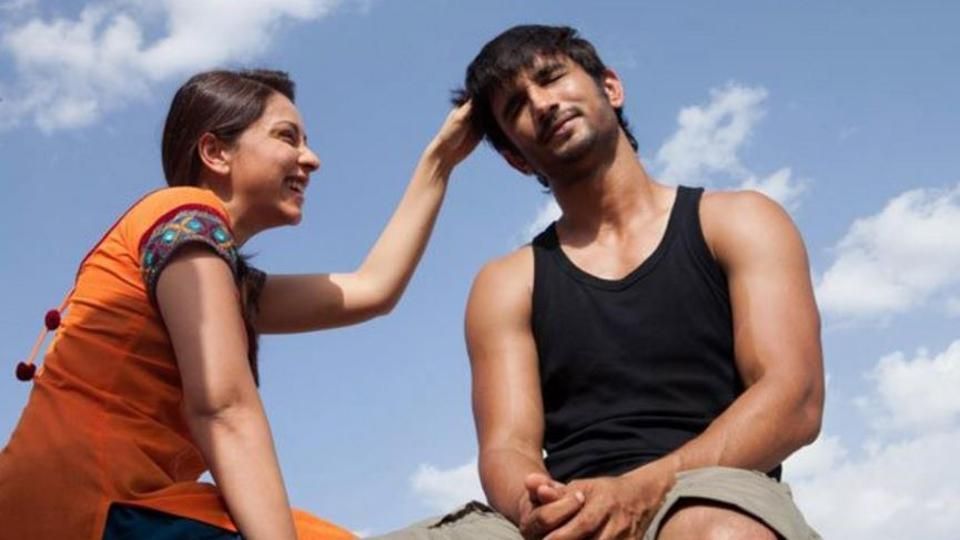This Rakshabandhan, let’s unburden the Bollywood sisters

Huma Qureshi and Saqeeb Salim’s Dobaara released earlier this year. The supernatural thriller was unique in the way that it had a brother-sister duo as the lead. Together they went into the depths of their past and tried to solve a mystery that was bothering them for long. Now, on Rakshabandhan, this film seems important simply because how many times do you see a brother-sister playing the hero together in a Bollywood film?
Zoya Akhtar’s Dil Dhadakne Do (2015) was also interesting in this aspect because it presented the changing dynamics of the brother-sister relationship. They were a business family where Ranveer Singh accepted Priyanka Chopra’s better business acumen without any fuss. This was a great shift from the sister as the eternal ‘damsel in distress’ we are accustomed to watching in Bollywood films.
It’s the same industry which thrived on songs that indicated how the sister’s marriage to a reputed family is the only serious concern a brother can possess. From ‘pyari behaniya’ to ‘dulhe raja bhaiyya’, we mostly had the sister neatly classified as a cliché.
And I am not even going into the details of those films where brothers avenged the deaths and rapes of their sisters. In short, this is how we saw it until quite late.
Sushant Singh Rajput, who brought out a new side of brothers in Kai Po Che and MS Dhoni: The Untold Story, traces the root of the problem in our mindsets. He describes how he owes his career to his sisters. He says, “I have four sisters and they have taught me everything I am good at. From playing cricket to riding a bike to thinking in a scientific way, I owe my entire personality to them.”
Sushant further says, “The entire mindset needs to change. The root of the problem is in being uncomfortable with the idea of gender equality. But lately things are improving for sure. We shall soon see more hero sisters in films and let go of this dated flawed way of showing sisters as just damsels in distress.”
Even now, how many films do we see with empowered women as sisters? Some filmmakers still take the older route and present such sisters as someone who will feel guilty of their choices in the future.
‘Bade bhaiyya’ is still leading the way. Sometimes as a benevolent king (Prem Ratan Dhan Payo) and sometimes as understanding gang leader (Josh). The power equations are tilted in his favour.
Onir, who made the terrific My Brother Nikhil with Juhi Chawla-Sanjay Suri as siblings, elaborates the problem. He says, “Well, I never saw them as one. I have always seen them as a source of strength. Friend and guide who can, if you are open, help you learn to understand and explore your own feminine side.”
Onir’s statement explains why more than the corrective measure, filmmakers need to understand the value of presenting both, brother and sister, as individuals with separate choices and desires.
Nagesh Kukunoor’s Dhanak, and prior to that Iqbal, also had a brother-sister combo. It’s the case of equal opportunities for both and Kukunoor is fair, but these films are rare in comparison to a number of other films where sisters are at the mercy of the men around them.
Abbas Tyrewala’s Jaane Tu Yaa Jaane Naa was kind of distinct in this regard. Prateek Babbar and Genelia D’souza represented the upper middle class urban landscape in a better way. More realistic, trustworthy and functional.
Earlier, for one Hare Rama Hare Krishna or one Agneepath, there were hundreds of Saazish and Majboor, time frame notwithstanding. The sisters were mostly abused, violated and murdered.
The situation may look a lot glossier now, but the soul of the traditional Bollywood still appears the same. Sandeep Mohan, the director of upcoming indie Shreelancer, throws light, “I feel they can get more real and go beyond the clichés. Sisters are educated, working, married and sometimes settled in other cities. The nature of the family bonding has changed a lot. Thanks to the social media, families remain in touch. Filmmakers should explore these aspects too rather than going the traditional way.”
The burden of keeping the family flag high shouldn’t be only with the brothers. Sisters are equally capable of doing that. It’s high time we redefine the gender roles in our films. No doubt, we are doing it, but sisters are more or less weighed down with the notion of ‘log kya kahenge’. Let’s unburden them.






